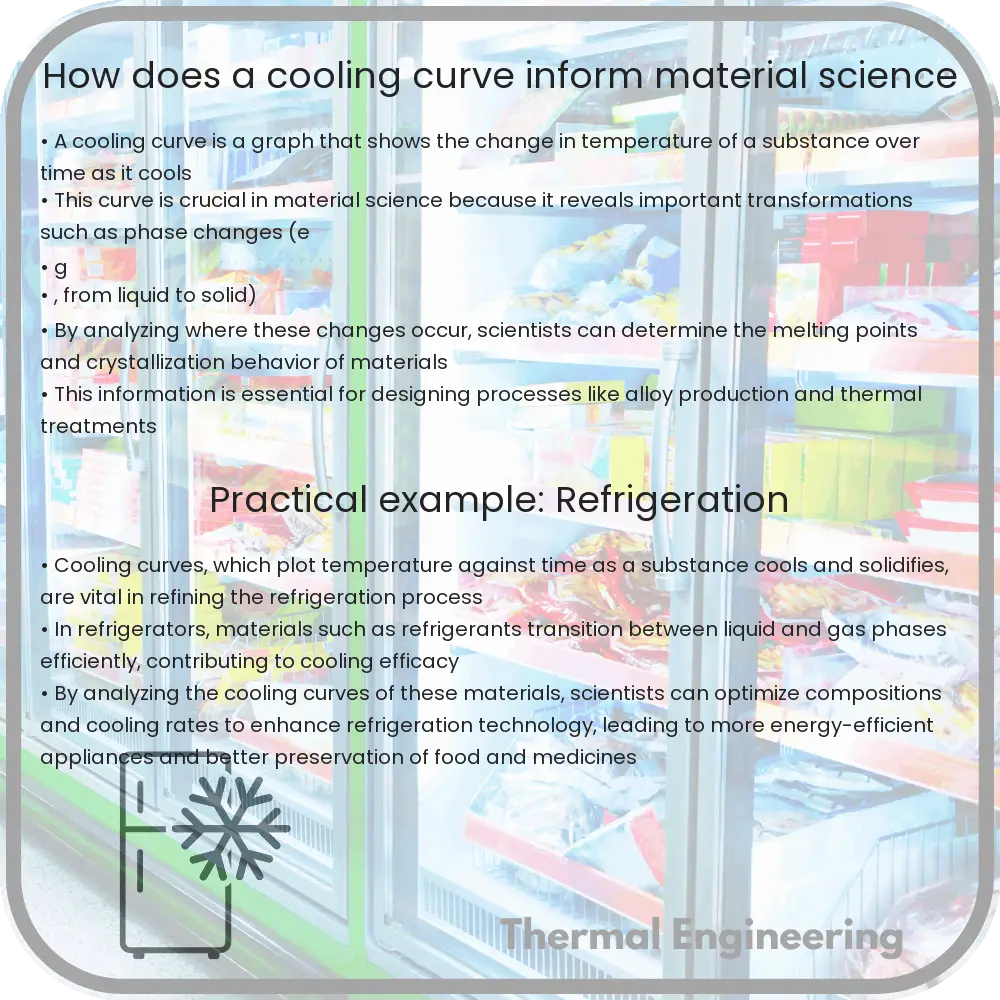Learn how cooling curves impact material properties during phase transitions, essential for metallurgy and manufacturing.

Understanding Cooling Curves in Material Science
In material science, the study of cooling curves is crucial for understanding the properties and behaviors of different materials as they transition from liquid to solid. These curves provide valuable insights into the crystallization and solidification processes, which are fundamental for applications in metallurgy, manufacturing, and materials engineering.
What is a Cooling Curve?
A cooling curve is a plot of temperature versus time, which illustrates how a substance cools and transitions from a higher energy state to a lower energy state. For materials transitioning from the liquid phase to the solid phase, this curve can reveal significant transformations such as the temperatures at which various phases occur, the rate of cooling, and the effects of cooling on material structure.
Key Features of Cooling Curves
- Temperature Plateaus: During the cooling of a pure substance, the temperature remains constant for a period when the material changes phase. This plateau indicates the release of latent heat as the material transitions from liquid to solid.
- Rate of Cooling: The slope of the cooling curve can indicate the rate at which heat is being removed from the substance. A steeper slope suggests a faster cooling rate, which can affect the crystal structure and mechanical properties of the final solid.
- Undercooling: Sometimes, the temperature of a liquid can drop below its normal solidification point without transitioning into a solid—a phenomenon known as undercooling. The extent of undercooling can influence the nucleation and growth of crystals.
Cooling Curve Analysis for Different Materials
Different materials exhibit unique cooling curves depending on their composition, impurities, and cooling conditions. For instance, metals and alloys might show complex cooling behaviors due to the presence of multiple phases and constituents. The analysis of these curves allows scientists and engineers to tailor cooling processes to optimize material properties such as toughness, ductility, and strength.
Practical Applications
- Metallurgy: Cooling curves are instrumental in metallurgy for controlling the microstructure of metals and alloys. By adjusting the cooling rate, metallurgists can influence the size and distribution of crystals in the solidified material, affecting its physical properties.
- Plastic Manufacturing: In plastic manufacturing, cooling curves help in determining the crystallization behavior of polymers. This is essential for ensuring the stability and performance of plastic products under different conditions.
- Quality Control: Cooling curve analysis is also used for quality control in various manufacturing processes. It ensures that the thermal treatments are consistent and that the materials meet the required specifications and performance criteria.
Conclusion
Cooling curves are a fundamental tool in material science, providing a deeper understanding of material behaviors and transformations during the cooling process. By studying these curves, scientists and engineers can manipulate material properties to suit specific applications, improving product performance and functionality across various industries. This knowledge not only enhances the material design and selection process but also plays a crucial role in advancing technology in materials engineering.